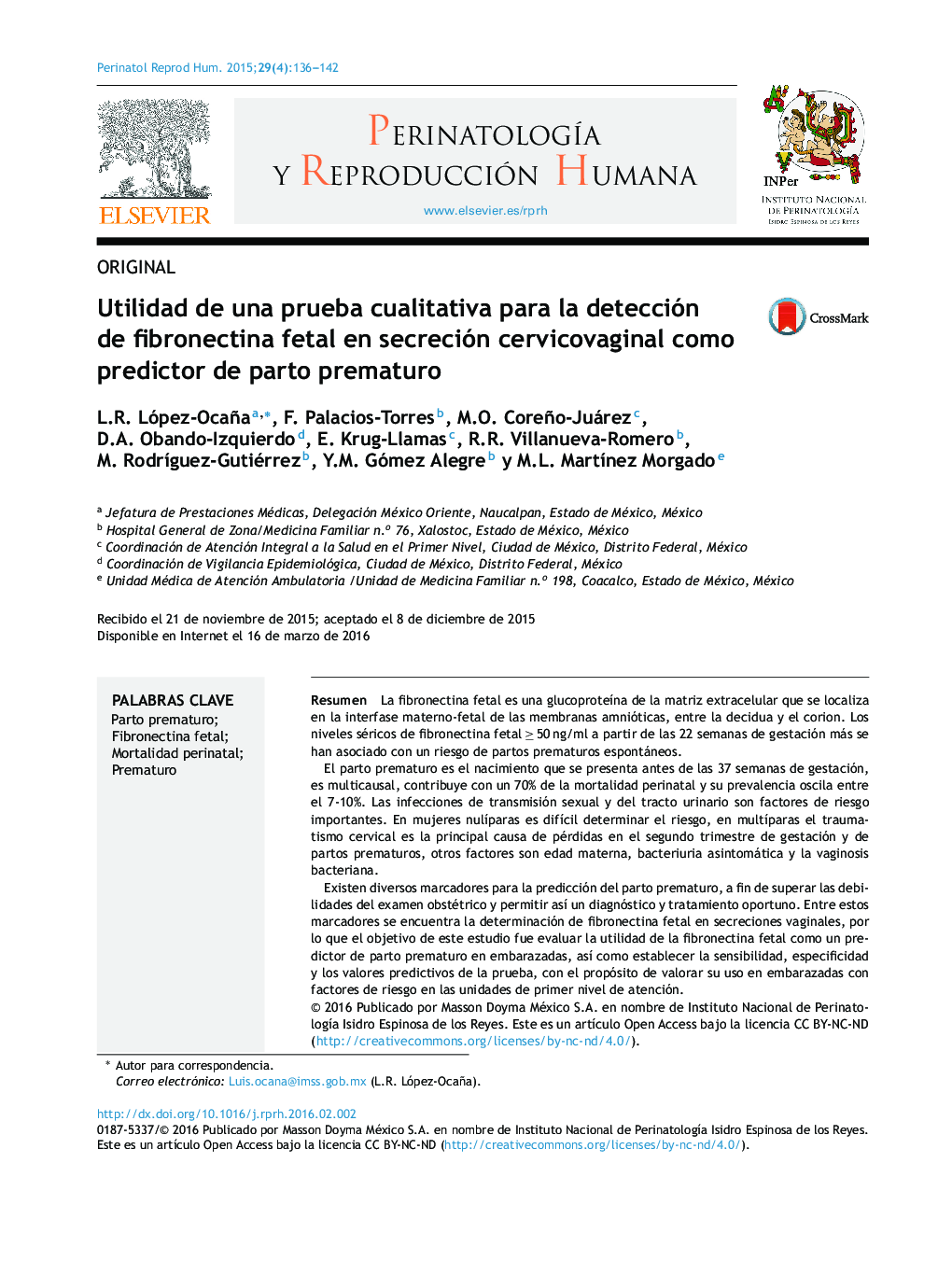| کد مقاله | کد نشریه | سال انتشار | مقاله انگلیسی | نسخه تمام متن |
|---|---|---|---|---|
| 4175718 | 1276213 | 2015 | 7 صفحه PDF | دانلود رایگان |
ResumenLa fibronectina fetal es una glucoproteína de la matriz extracelular que se localiza en la interfase materno-fetal de las membranas amnióticas, entre la decidua y el corion. Los niveles séricos de fibronectina fetal ≥ 50 ng/ml a partir de las 22 semanas de gestación más se han asociado con un riesgo de partos prematuros espontáneos.El parto prematuro es el nacimiento que se presenta antes de las 37 semanas de gestación, es multicausal, contribuye con un 70% de la mortalidad perinatal y su prevalencia oscila entre el 7-10%. Las infecciones de transmisión sexual y del tracto urinario son factores de riesgo importantes. En mujeres nulíparas es difícil determinar el riesgo, en multíparas el traumatismo cervical es la principal causa de pérdidas en el segundo trimestre de gestación y de partos prematuros, otros factores son edad materna, bacteriuria asintomática y la vaginosis bacteriana.Existen diversos marcadores para la predicción del parto prematuro, a fin de superar las debilidades del examen obstétrico y permitir así un diagnóstico y tratamiento oportuno. Entre estos marcadores se encuentra la determinación de fibronectina fetal en secreciones vaginales, por lo que el objetivo de este estudio fue evaluar la utilidad de la fibronectina fetal como un predictor de parto prematuro en embarazadas, así como establecer la sensibilidad, especificidad y los valores predictivos de la prueba, con el propósito de valorar su uso en embarazadas con factores de riesgo en las unidades de primer nivel de atención.
The foetal fibronectin is an extracellular matrix glycoprotein that is located in the maternal-foetal interface of the amniotic membranes between the decidua and chorion. The serum levels of foetal fibronectin ≥ 50 ng/ml at the end of 22 weeks have been associated with an increased risk of spontaneous preterm birth. The foetal fibronectin is one of the best predictors of preterm birth that may help to identify women at risk of preterm delivery.Preterm delivery is the birth that occurs before 37 weeks of gestation. It has multiple causes and is associated with the 70% of perinatal mortality cases. Its prevalence ranges from 7-10%. In nulliparous women the risk is difficult to determine, in multiparous the cervical trauma is the main cause of losses in the second trimester and preterm births, other factors are maternal age, asymptomatic bacteriuria and bacterial vaginosis.There are several markers for the prediction of preterm delivery, to overcome the weaknesses of the obstetric examination and thus allow diagnosis and treatment. One of these markers is the determination of foetal fibronectin in vaginal secretions, so the aim of this study was to evaluate the usefulness of foetal fibronectin as a predictor of preterm delivery in pregnant women, calculate the sensitivity, specificity, and the predictive values of the test, in order to assess its use in pregnant women with risk factors in units of primary care.
Journal: Perinatología y Reproducción Humana - Volume 29, Issue 4, December 2015, Pages 136–142
